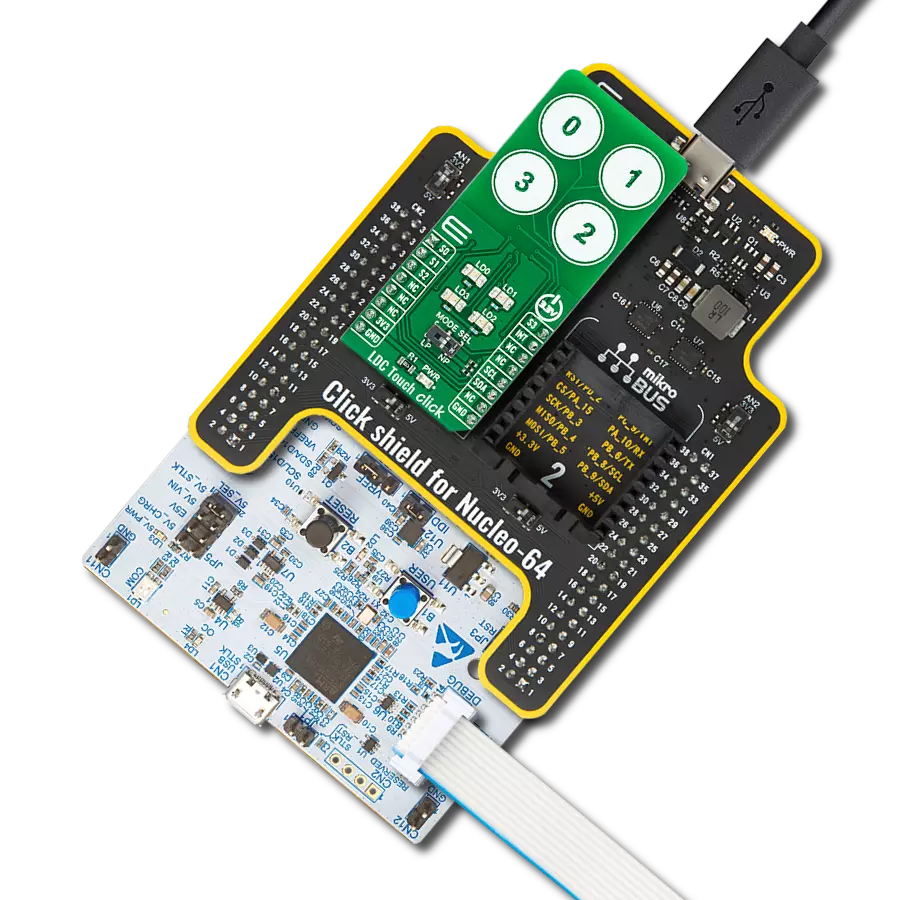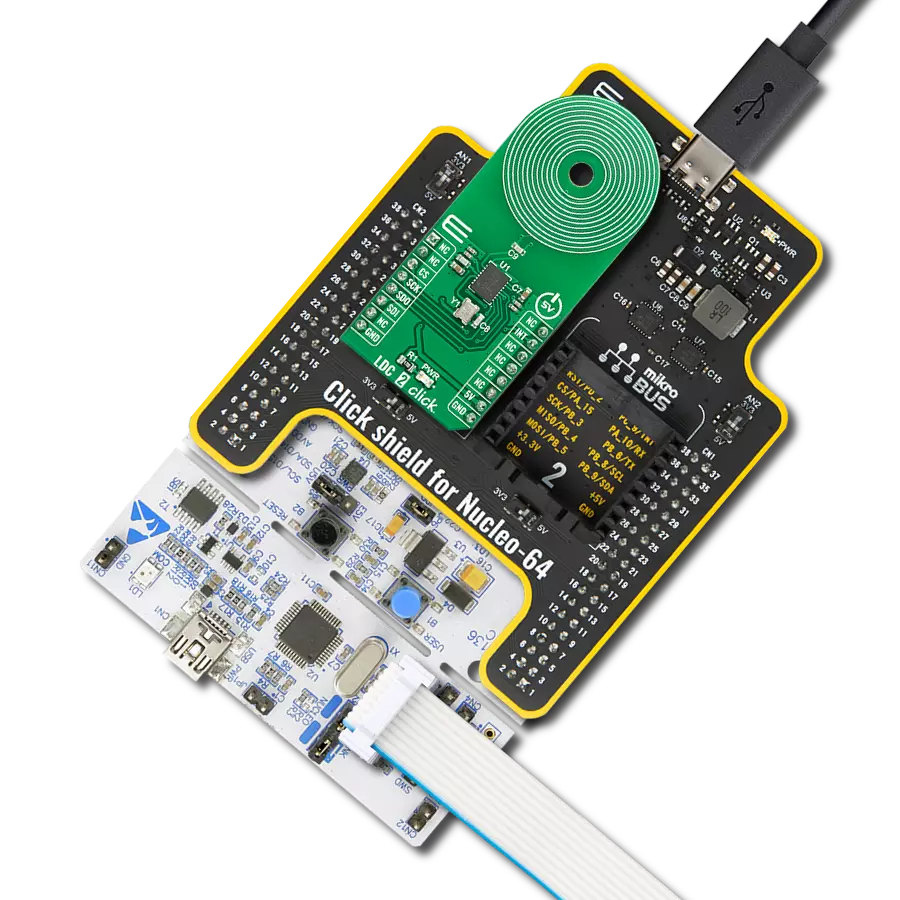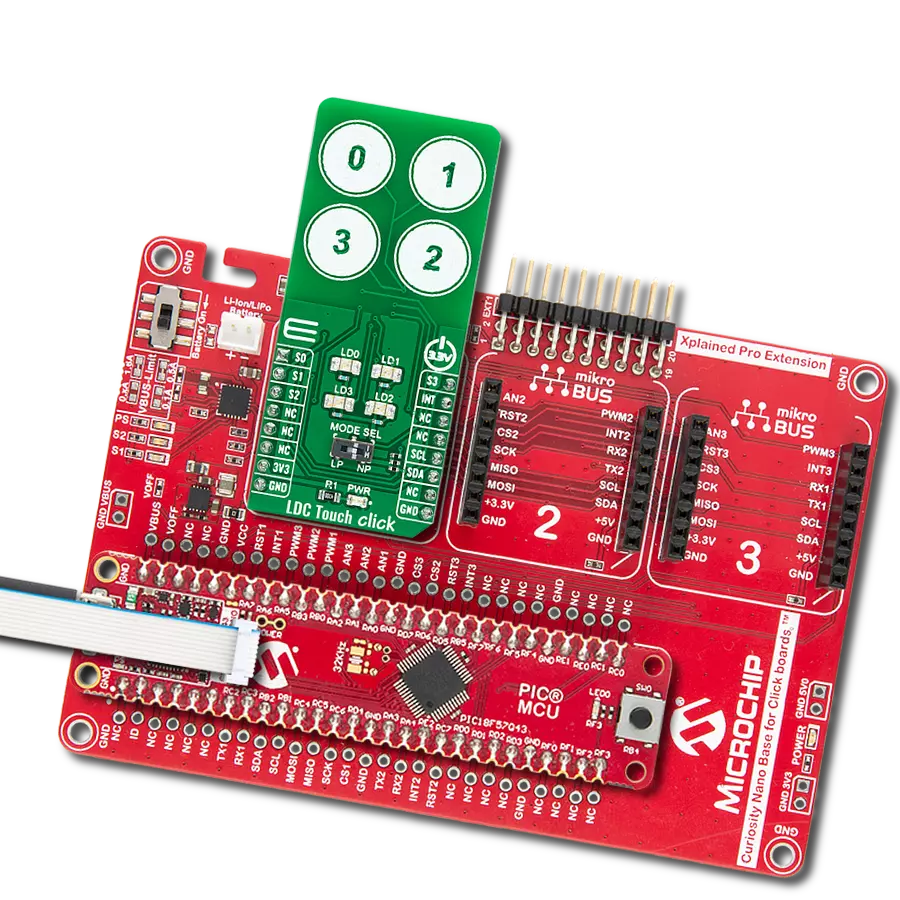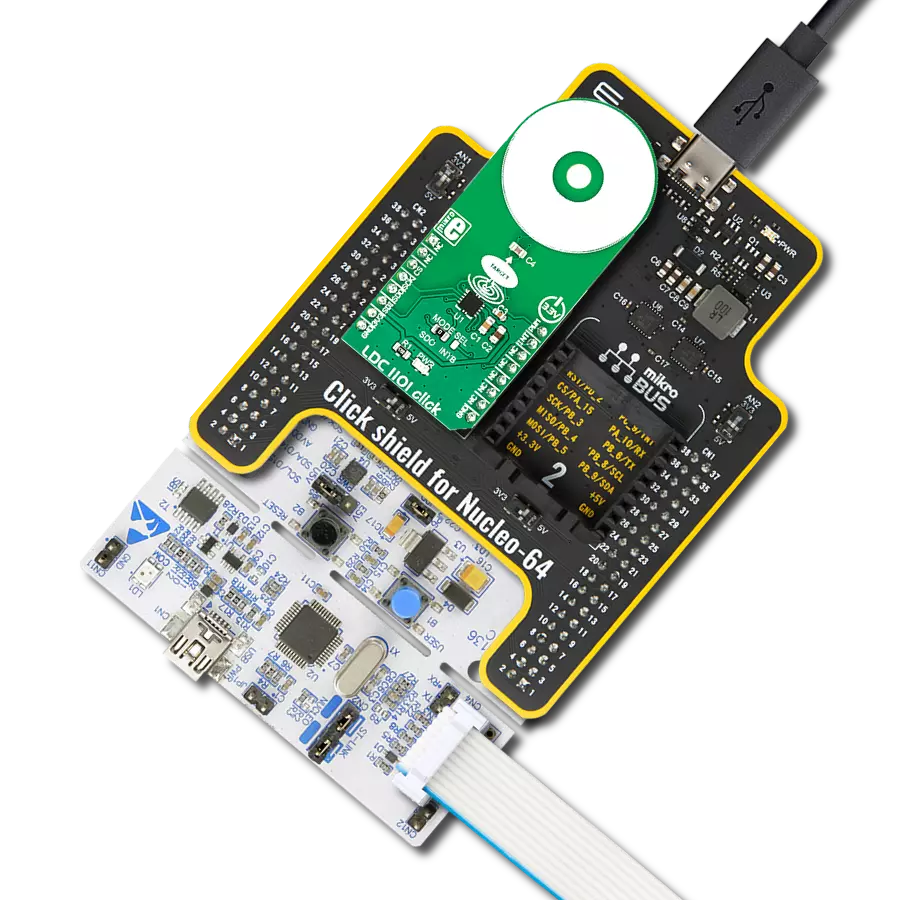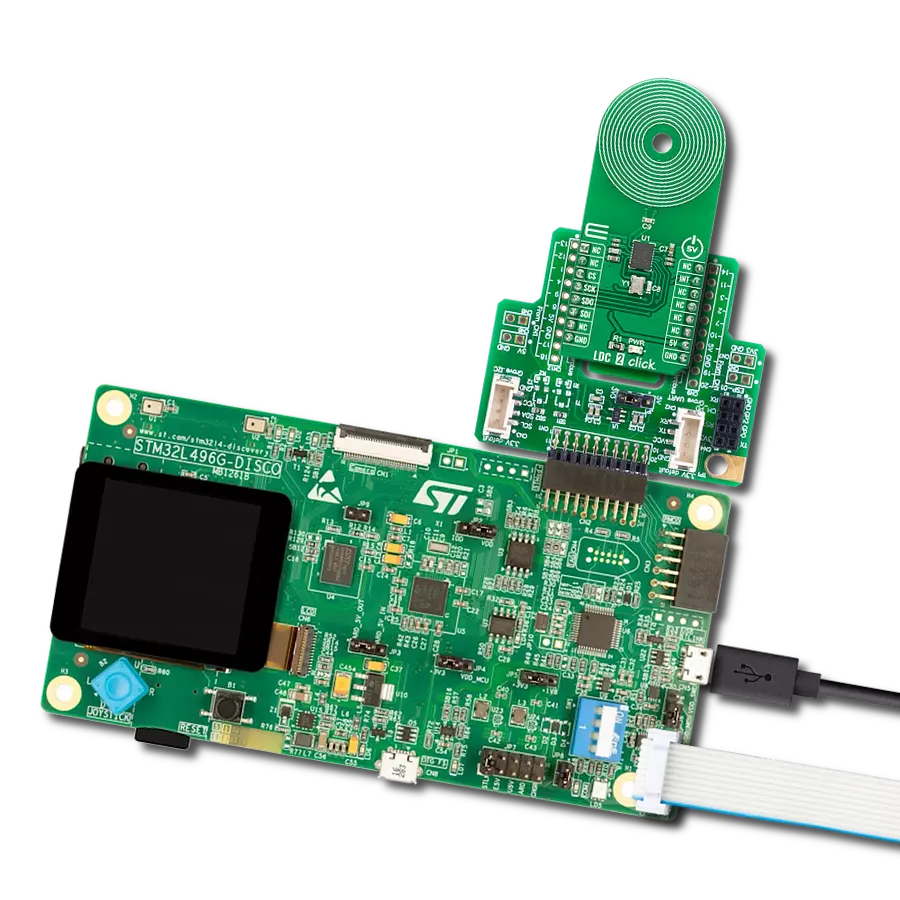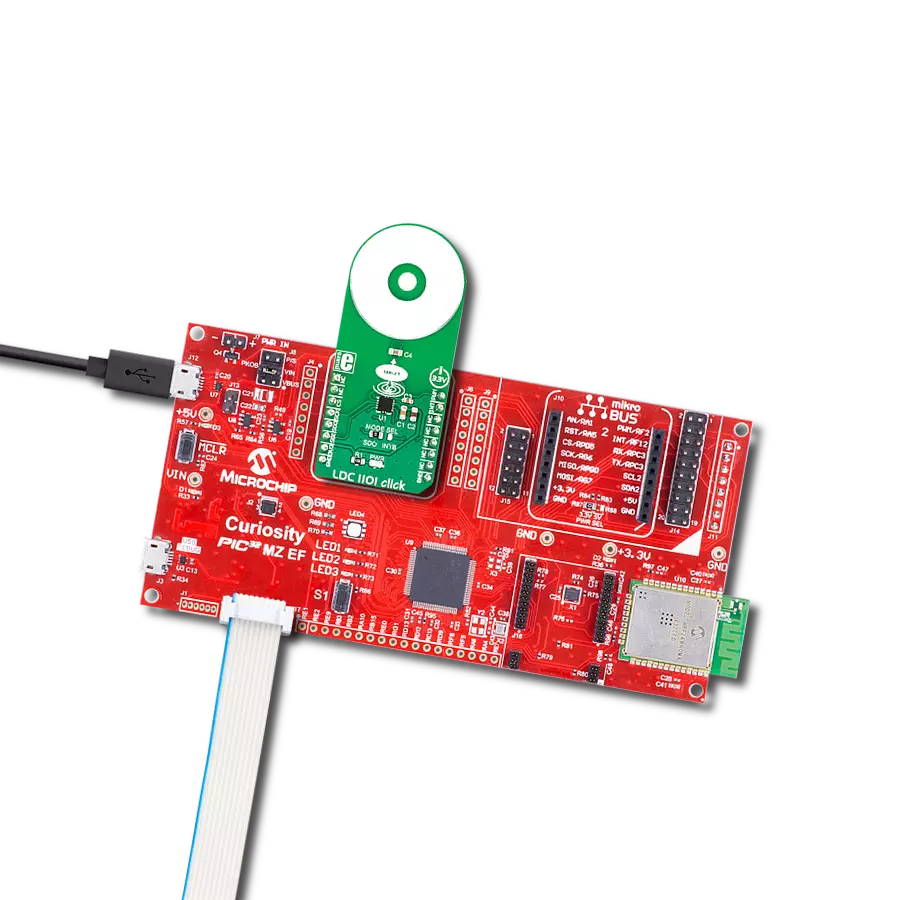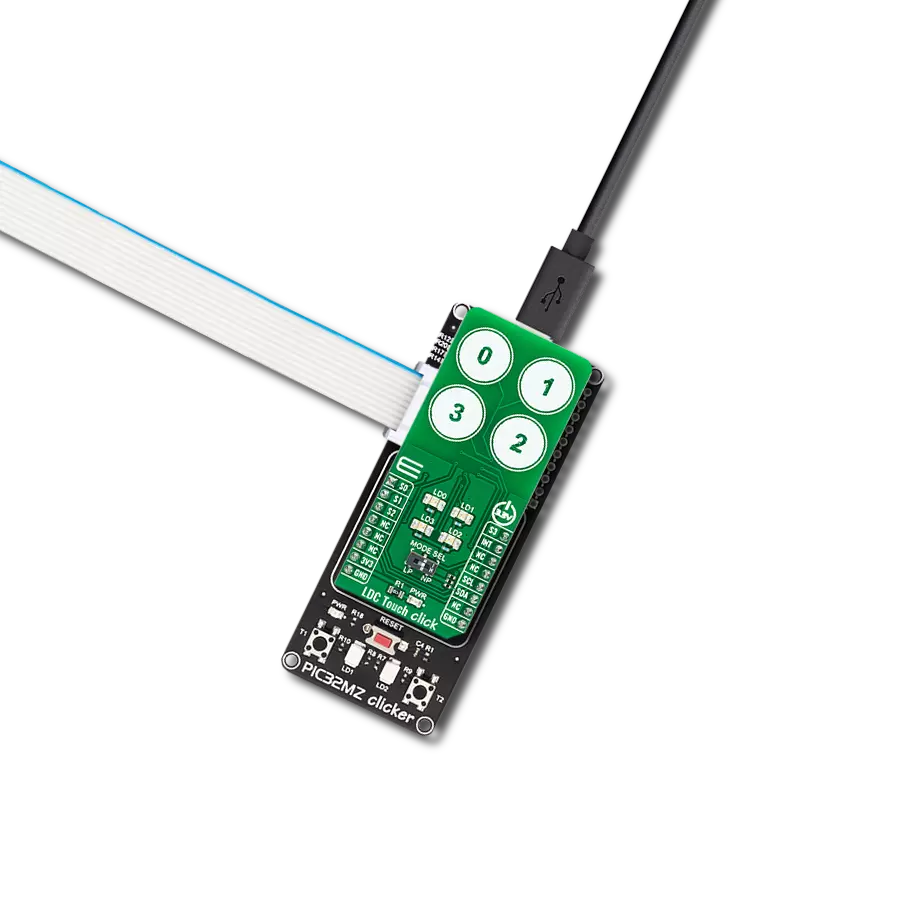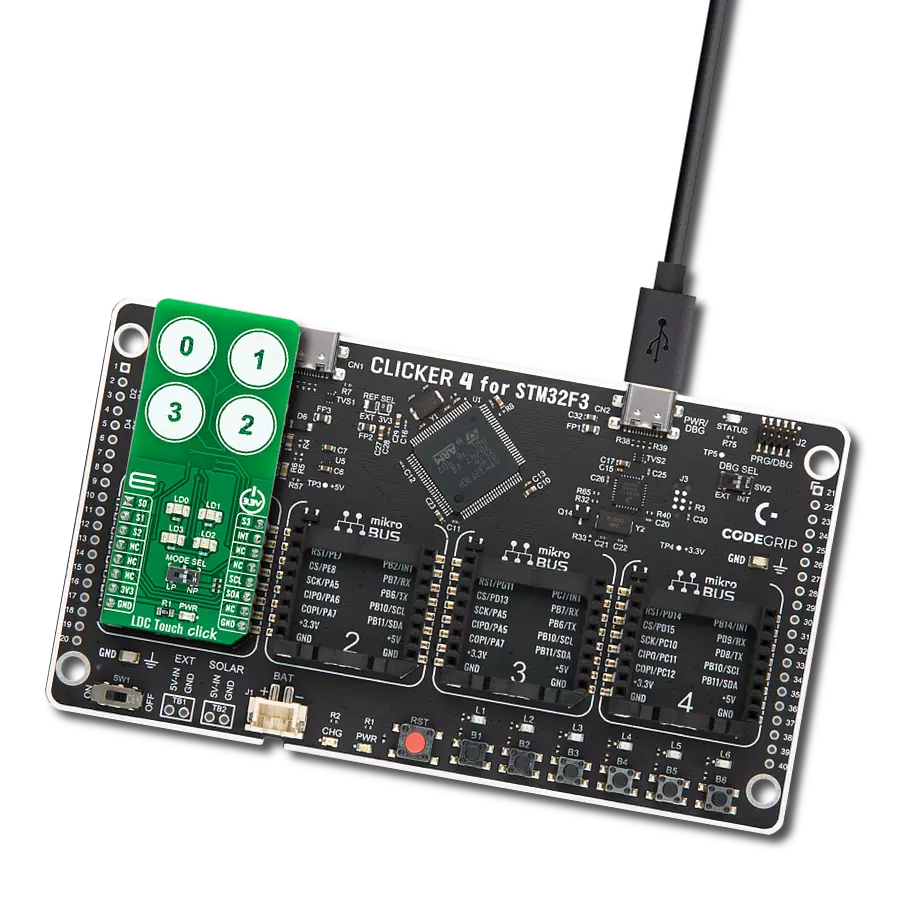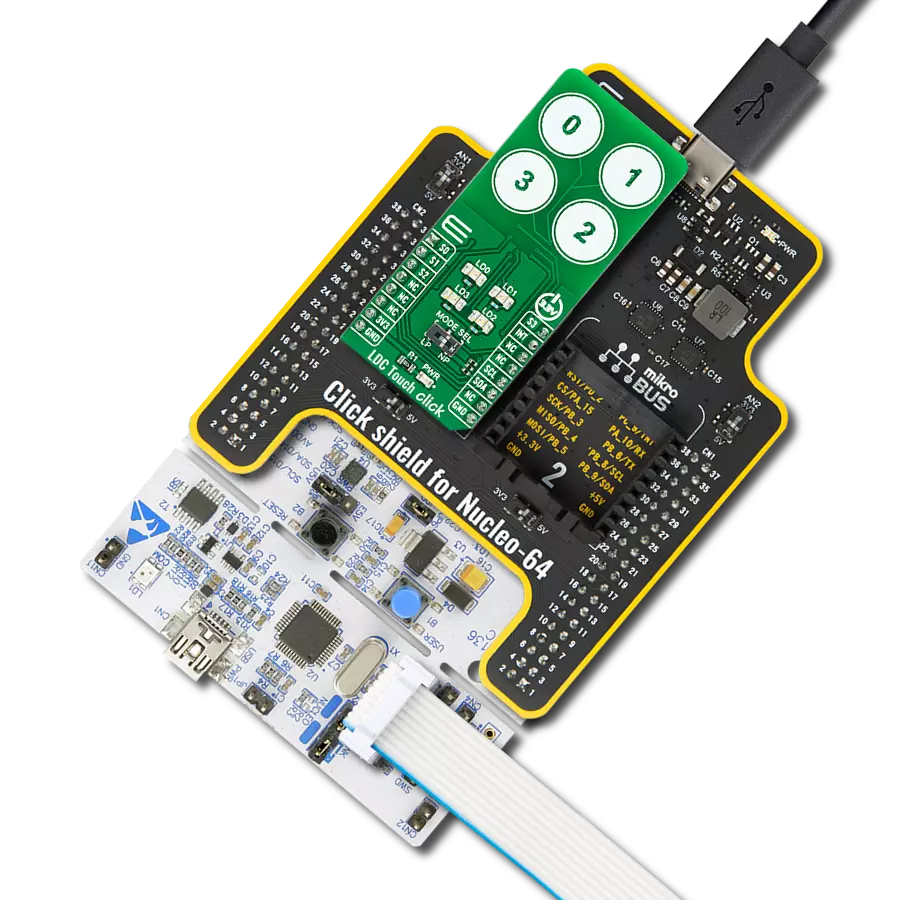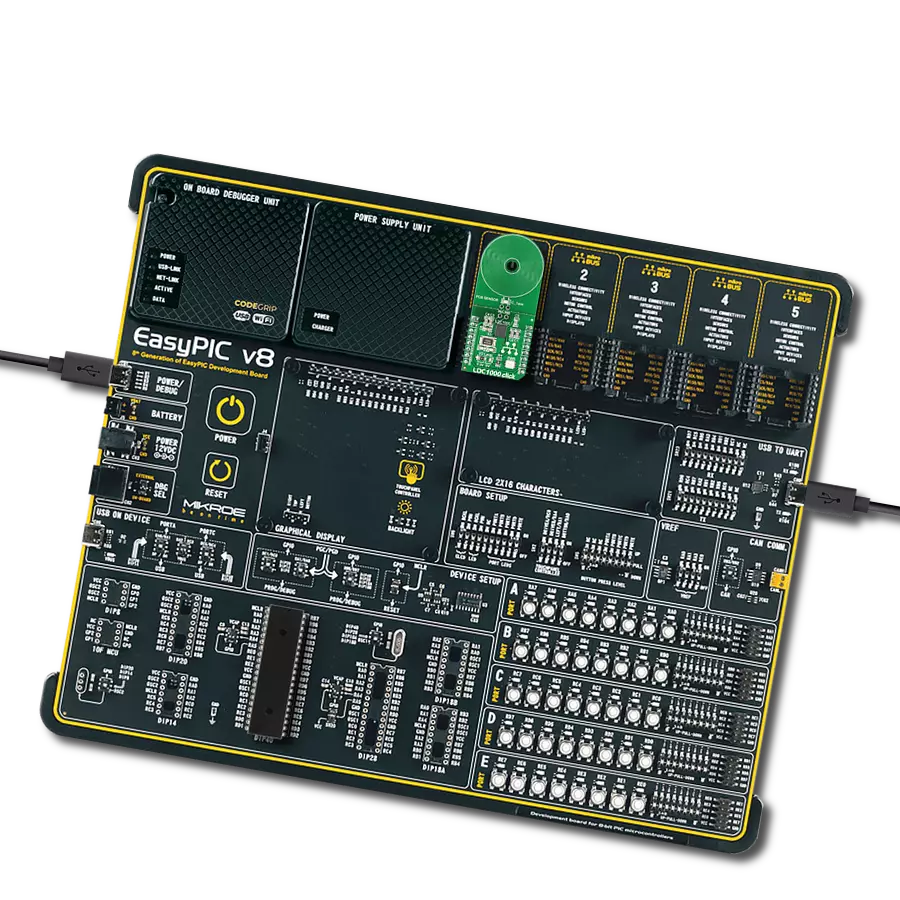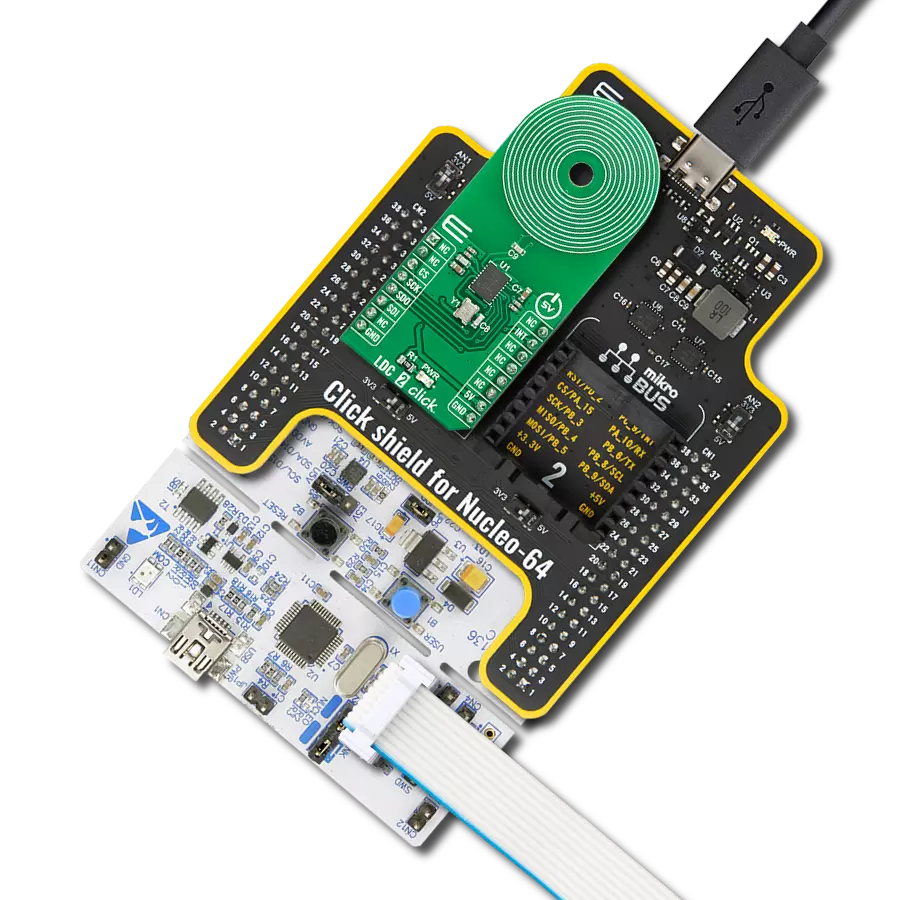Accurately measure the inductance change caused by the presence or movement of conductive targets within its magnetic field
A
A
Hardware Overview
How does it work?
LDC1000 Click is based on the LDC1000, a low-power inductance-to-digital converter from Texas Instruments. The LDC1000 simultaneously measures an LC resonator's impedance and resonant frequency by regulating the oscillation amplitude in a closed-loop configuration to a constant level while monitoring the energy the resonator dissipates. By monitoring the amount of power injected into the resonator, the LDC1000 can determine the impedance value and return it as a digital value. In addition, the LDC1000 can also measure the oscillation frequency of the LC circuit, used to determine the inductance of the LC circuit, also given in a digital format. The LDC1000 has a sub-micron resolution in short-range applications suitable for precise short-range measurements of conductive targets' position, motion, or composition. This Click board™ comes with a
detachable sensor (an LC tank comprising a 36-turn PCB coil and a 100pF 1% NPO capacitor). The LDC measures the inductance change that a conductive target causes when it moves into the inductor's AC magnetic field to provide information about the target's position over a sensor coil. The inductance shift is caused by eddy currents (circulating currents) generated in the target due to the sensor's magnetic field. These currents make a secondary magnetic field that opposes the sensor field, causing a shift in the observed inductance, used for precise positioning of the target as it moves laterally over the sensor coil. The LDC1000 communicates with MCU using the standard SPI serial interface with a maximum frequency of 4MHz. It also has an interrupt pin routed to the INT pin of the mikroBUS™ socket, which can be configured in three different ways by programming
the interrupt mode register. An interrupt pin can act as a proximity switch with programmable hysteresis, a wake-up feature, or a data-ready pin indicating a valid condition for new data availability. Inductive sensing of this LDC is highly reliable where harsh conditions don't hinder the performance of LDC1000. Alongside the detachable sensor, the onboard INA and INB pins allow you to replace the provided sensor and solder your own. This Click board™ can operate with either 3.3V or 5V logic voltage levels selected via the I/O level jumper. This way, both 3.3V and 5V capable MCUs can use the communication lines properly. However, the Click board™ comes equipped with a library containing easy-to-use functions and an example code that can be used, as a reference, for further development.
Features overview
Development board
PIC32MZ Clicker is a compact starter development board that brings the flexibility of add-on Click boards™ to your favorite microcontroller, making it a perfect starter kit for implementing your ideas. It comes with an onboard 32-bit PIC32MZ microcontroller with FPU from Microchip, a USB connector, LED indicators, buttons, a mikroProg connector, and a header for interfacing with external electronics. Thanks to its compact design with clear and easy-recognizable silkscreen markings, it provides a fluid and immersive working experience, allowing access anywhere and under
any circumstances. Each part of the PIC32MZ Clicker development kit contains the components necessary for the most efficient operation of the same board. In addition to the possibility of choosing the PIC32MZ Clicker programming method, using USB HID mikroBootloader, or through an external mikroProg connector for PIC, dsPIC, or PIC32 programmer, the Clicker board also includes a clean and regulated power supply module for the development kit. The USB Micro-B connection can provide up to 500mA of current, which is more than enough to operate all onboard
and additional modules. All communication methods that mikroBUS™ itself supports are on this board, including the well-established mikroBUS™ socket, reset button, and several buttons and LED indicators. PIC32MZ Clicker is an integral part of the Mikroe ecosystem, allowing you to create a new application in minutes. Natively supported by Mikroe software tools, it covers many aspects of prototyping thanks to a considerable number of different Click boards™ (over a thousand boards), the number of which is growing every day.
Microcontroller Overview
MCU Card / MCU
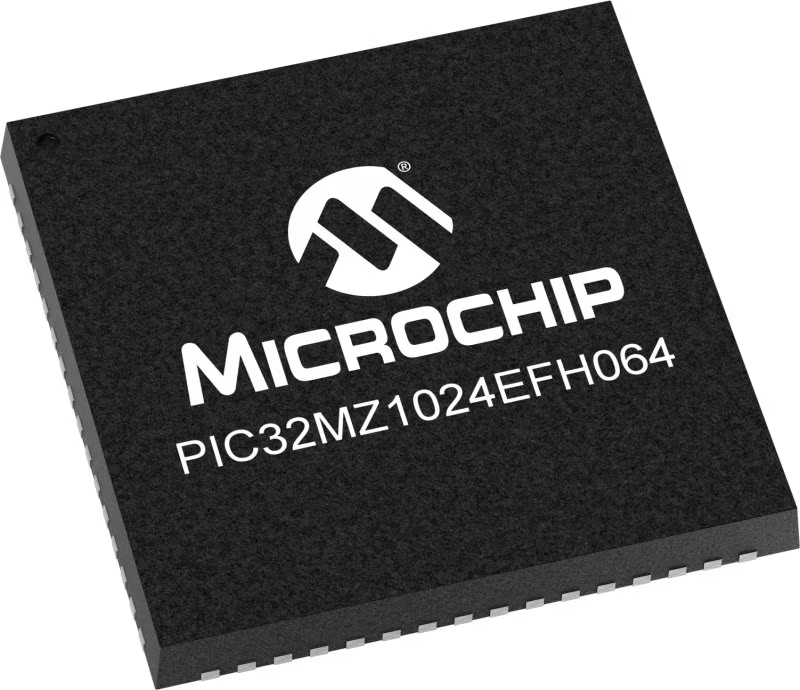
Architecture
PIC32
MCU Memory (KB)
1024
Silicon Vendor
Microchip
Pin count
64
RAM (Bytes)
524288
Used MCU Pins
mikroBUS™ mapper
Take a closer look
Click board™ Schematic

Step by step
Project assembly
Software Support
Library Description
This library contains API for LDC1000 Click driver.
Key functions:
ldc1000_get_proximity_data- This function reads the proximity dataldc1000_get_inductance_data- This function reads the inductance dataldc1000_get_int_input- This function reads the input voltage from the INT pin
Open Source
Code example
The complete application code and a ready-to-use project are available through the NECTO Studio Package Manager for direct installation in the NECTO Studio. The application code can also be found on the MIKROE GitHub account.
/*!
* \file
* \brief Ldc1000 Click example
*
* # Description
* This example showcases how to initialize and configure the logger and Click modules and
* read and display proximity and impendance data.
*
* The demo application is composed of two sections :
*
* ## Application Init
* This function initializes and configures the logger and Click modules. Configuration data
* is written to the: rp maximum/minimum, sensor frequency, LDC/Clock/Power registers.
*
* ## Application Task
* This function reads and displays proximity and impendance data every 10th of a second.
*
* \author MikroE Team
*
*/
// ------------------------------------------------------------------- INCLUDES
#include "board.h"
#include "log.h"
#include "ldc1000.h"
// ------------------------------------------------------------------ VARIABLES
static ldc1000_t ldc1000;
static log_t logger;
static uint16_t old_proximity;
// ------------------------------------------------------ APPLICATION FUNCTIONS
void application_init ( )
{
log_cfg_t log_cfg;
ldc1000_cfg_t cfg;
old_proximity = 0;
/**
* Logger initialization.
* Default baud rate: 115200
* Default log level: LOG_LEVEL_DEBUG
* @note If USB_UART_RX and USB_UART_TX
* are defined as HAL_PIN_NC, you will
* need to define them manually for log to work.
* See @b LOG_MAP_USB_UART macro definition for detailed explanation.
*/
LOG_MAP_USB_UART( log_cfg );
log_init( &logger, &log_cfg );
log_info( &logger, "---- Application Init ----" );
// Click initialization.
ldc1000_cfg_setup( &cfg );
LDC1000_MAP_MIKROBUS( cfg, MIKROBUS_1 );
ldc1000_init( &ldc1000, &cfg );
Delay_ms ( 100 );
ldc1000_default_cfg( &ldc1000 );
Delay_ms ( 100 );
}
void application_task ( )
{
uint16_t proximity;
float inductance;
proximity = ldc1000_get_proximity_data( &ldc1000 );
inductance = ldc1000_get_inductance_data( &ldc1000 );
if ( ( ( proximity - old_proximity ) > LDC1000_SENSITIVITY ) &&
( ( old_proximity - proximity ) > LDC1000_SENSITIVITY ) )
{
log_printf( &logger, " * Proximity: %d \r\n", proximity );
log_printf( &logger, " * Impendance: %f uH\r\n", inductance );
old_proximity = proximity;
log_printf( &logger, "--------------------\r\n" );
Delay_ms ( 100 );
}
}
int main ( void )
{
/* Do not remove this line or clock might not be set correctly. */
#ifdef PREINIT_SUPPORTED
preinit();
#endif
application_init( );
for ( ; ; )
{
application_task( );
}
return 0;
}
// ------------------------------------------------------------------------ END
Additional Support
Resources
Category:Inductance

















